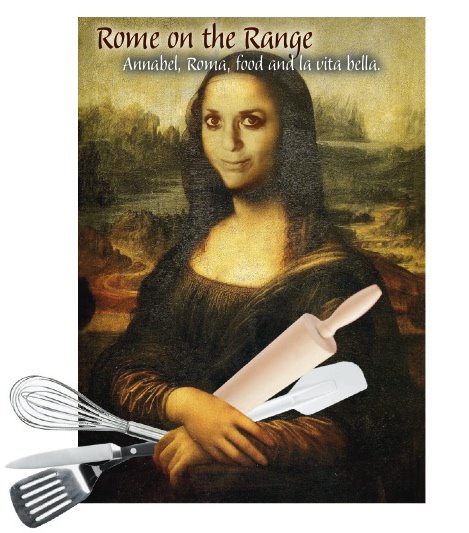


So far, I've had to cut guanciale twice. It's not as easy as it sounds.
Italy loves it's smoked and cured meat products. At Cantina del Vecchio, during "happy hour" (every night from 7:00 until about 10:00 p.m), you'll find the bar lined up with Pinocciliona (from Lombardi), salamis, and such (more about this later), served with assorted cheeses, brushette (with fresh tomatoes on the side) or spread with tapenada (pureed olive spread) and the daily fritatta, a room temperature omelet, cut into squares.
Back to the pig. If you're not familiar with guanciale, as I admit I wasn't, here's a little description. Basically, it's cured, not smoked, pork cheek or jowel. In fact, when I asked about it (I thought it was pancetta -- stupid American!), Guiseppe pointed pulled on his own cheek to describe it. The meat, very fatty, like bacon (don't use bacon, too smokey), when whole, includes the actually pig skin on one side (complete with little hairs) and is cured with salt, coarse ground black or red pepper.
Guanciale (pronouced gwahn-chee-ah-lay), is used a lot -- in Amatriciana and Carbonara pastas dishes, served over a Caesar salad and anywhere else you feel like adding it. It's usually not eaten without cooking it first.
When it's sizzled up in a skillet, it's the shizzle.
Here's how you cut it. First, remove the tough pig skin (it's caramel colored, hard to the touch and covers a layer of fat, which you want to keep). So, using a super sharp knife, cut off the skin. Next, slice the pork thin -- like thick bacon (you can do this by hand, but we use an electric slicer). Then cut the slices into thin strips. This is a greasy job and I keep thinking throughout the process that a slip of fat-laden knife could end badly.
Pasta all'Amatriciana
You most often see this sauce paired with bucatini, a stringy, hollow pasta. This is my version of the recipe.
2 Tbsp. extra-virgin olive oil
6 ounces gaunciale (if you can't find it, use pancetta)
1 cup minced onions
1/4 tsp. red pepper flakes
4 cups fresh tomato sauce (see earlier recipe -- do not use regular canned tomato sauce)
4 cups cherry tomatoes, halved
Salt and pepper to taste
1 cup or more, fresh finely grated combination Pecorino and Parmesan cheeses
12-16 ounces pasta, such a bucatini, linguine or fettuccine
Fresh finely grated Parmesan cheese, on the side.
Bring a large pot of salted water to a boil over high heat. Cook pasta to al dente. While the pasta is cooking, prepare the sauce.
Heat olive oil in a large skillet (or large pot) over medium-high heat. Add the guanciale and cook, stirring often, until the guanciale is golden (do not overcook -- this is not supposed to be like crispy bacon). Add the onion and cook for 3 minutes. Stir in tomato sauce and tomatoes and cook for 2 minutes more. Add salt and pepper to taste.
Drain the pasta well and add to the skillet (or pot) and toss well. Add cheese a little at a time, tossing well each time to incorporate the cheese. Adjust salt to taste.
Serve hot, with extra cheese on the side and drizzled with addtional olive oil. Makes 6-8 servings.



















































